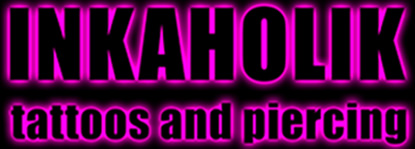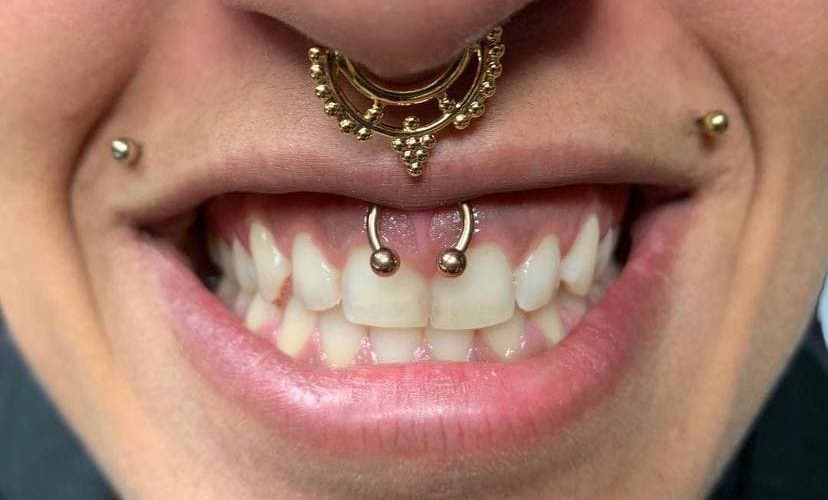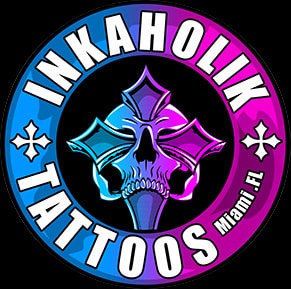Piercing is a body modification that has been practiced for centuries. Modern body piercings are typically done with needles, but in ancient times they were often accomplished by inserting various objects through the skin. Regardless of the technique, body piercing is an expression of self-expression and artistry. In this guide, you will learn about different types of body piercings, healing times, pain levels, selecting a studio/piercer to go to, and safety concerns. Discover how to take care of your new piercing after you get it done!
The body piercing guide will cover:
Wondering what piercing should you get first? You are at the right place!
Ear Piercings
Ear piercings are a timeless fashion phenomenon that will never go out of style. When it comes to putting together an appealing and distinctive ensemble, a little bit of ear piercing is never wrong. But with so many options available, it’s easy to get confused. People no longer have just one piercing in each ear; they can now have multiple piercings or just one at a time depending on your level of comfort. This might be frustrating and confusing for those who are unfamiliar with ear piercing and don’t know what else is available!
There are several alternative locations to pierce your ears, each with its own set of challenges. The majority of ear piercings pass through cartilage and must be performed by professional piercers using a needle. Earlobes are one of the least painful and most frequently pierced regions, and they can be done with either a needle or a piercing gun.
These are the common types of ear piercing:
- Forward Helix
- Helix Orbital
- Daith
- Outer/Inner Conch
- Rook
- Tragus and Anti-Tragus
- Industrial
- Snug
- Upper/Standard Lobe
Facial Piercings
Facial piercings are done on the face which is a very sensitive area of your body. It’s important to find an experienced piercer who can help make your experience as painless and comfortable as possible when it comes time for you to get pierced in this region! Facial piercings may be fun, but they’re not easy to heal. Here’s a quick breakdown of some common facial piercings:
Infinity Piercing – This is the piercing that gives you an infinity symbol on your face. It goes straight through your cheek and does not require any jewelry for healing purposes. You will need gauze while it heals so keep this in mind!
Nostril Piercing – Many people find nostril piercings more comfortable than septum piercings, but the healing process is a little bit longer for this piercing. You will need to use 16 gauge jewelry or smaller so that you don’t have problems with swelling and discomfort.
Nasal Bridge Piercing – This is technically considered a surface piercing because it does not pass through any cartilage tissue. It’s located at the top of your nose and is a popular choice for those who want to stretch their piercing from 16g to 18g.
Nose Piercing – Nose piercings are not as common as ear or lip piercings, but they’re still becoming more mainstream every day! This type of piercing passes through cartilage so it’s important to find a professional piercer with plenty of experience working on noses. Nose rings will be a great addition to your jewelry box.
Other types of facial piercings include:
Septum Piercing – This type of piercing passes through cartilage and can be done in either an upper or lower location on your nose depending upon which spot is most comfortable.
Cheek Piercing – Cheek piercings are popular with women who wear glasses because they will not get in the way of your eyewear! This piercing passes through cartilage and you must use 16 gauge or smaller jewelry for healing purposes.
Monroe Piercing – The Monroe piercing is quite similar to a lip piercing; it’s a surface piercing that passes through cartilage and can be easily hidden with makeup. It’s located on the upper lip, right below your nose.
Oral Piercings
Oral piercings are usually done in the lower lip, but it’s also possible to get a piercing on your tongue. This type of piercing can be incredibly painful if you’re not used to pain, so make sure that you do plenty of research before committing yourself to this type of procedure! Also, keep in mind that oral piercings usually take the longest to heal out of all facial piercings.
Tongue Piercing – This type of piercing takes quite some time to heal, but it can be an incredibly fun way to express yourself! Make sure that you choose the right jewelry size for your tongue based on how wide your mouth is. It’s also important that you don’t drink anything with carbonation or eat hard foods while you’re healing because this will prolong the process.
Lip Piercing – Lip piercings are a common piercing choice, but they’re considered difficult to heal. It’s recommended that you use 14 gauge jewelry in the initial piercing and then switch over to 12 or 16 gauges once your hole has fully closed up.
Body Piercing
Body piercings are becoming more and more popular as the years go by. So many people love to get pierced that there’s a whole industry devoted to helping you care for your new piercing if you choose this route! Here is a complete guide of how this body art works:
First, you’ll need to find a reputable studio where experienced piercers can help you choose the right options for you. It’s important to go with a place that has plenty of experience so you don’t have problems healing your piercing afterward!
Next, your piercer will clean his or her tools and then proceed to perform the actual piercing. He or she may use clamps or tissue manipulation in order to make this process go more smoothly. Sanitation before and after the procedure is key for healing time.
Finally, your piercer will insert the jewelry into your new piercing and explain how to care for it on an ongoing basis. Depending upon where you get pierced, you may need to use saline soaks or hydrogen peroxide in order to keep your wound clean! It’s also important that you do not touch your piercing while it’s healing to prevent infection.
There are a lot of benefits associated with this type of body modification, including:
• You can change the jewelry whenever you want! Many people find that they get bored wearing the same piece for too long and opt to switch out their piercings. If you’re one of these individuals then you’re in luck! It’s easy to change your body jewelry as you please.
• You can accessorize with a variety of colors and styles depending on the type of piercing that you want! This is especially true if you get facial piercings because there are so many different types available these days. There’s no limit to how creative you can be when it comes to body piercings.
• Most body piercings are incredibly common these days, so you won’t have any problems finding clothes that fit! Even if your piercing is exposed, most people will not bat an eye at the sight of it. This makes this type of modification perfect for those who want attention without having to feel self-conscious.
- Navel/Belly Button
- Nipple Piercings (Male and Female)
- Nape
- Sternum/Cleavage
- Vampire Bite
- Madison
- Dermal Anchors/Micro-dermal Implants
- Corset Piercings
- Genital Piercings
Explain Piercing Safety and After Care Tips
There are a few key aftercare tips that you should follow in order to make your body piercing go more smoothly, body piercing aftercare is extremely important.
• It’s important to avoid putting any creams or ointments on your piercing unless it was recommended by your piercing professional. This can cause an infection or an allergic reaction, so it’s best that you stick with the basics when it comes to cleaning and caring for your wound.
• You should also avoid wearing tight clothing while you’re healing a body piercing because this will make things more difficult! If you’re not able to adjust your shirt or pants so that it doesn’t touch the area, then try using gauze in order to create a barrier between them.
• Don’t pick at any scabs! This could be tempting because they can look unsightly, but picking will only cause more problems. It’s best to leave them alone so your piercing can heal properly.
• Avoid touching the area too much once it’s healed because this could cause a reaction or infection! You don’t want to irritate it, even if you’re just playing around. If you notice that there is any redness then be sure to take immediate action in order to prevent things from getting worse.
• You should never take out your belly button piercing until at least six weeks have passed from when you got pierced! This may seem like an eternity for those who are used to wearing earrings every day, but it’s important to give your piercing time to heal. If you take out your jewelry too soon then there is a chance that the hole could close up again!
• Keep in mind that body piercings can cause discomfort after getting pierced, so don’t be alarmed if this happens at first! The area will feel tender for a few days after getting pierced, but this is something that will eventually go away.
• Avoid using antibacterial soap on your belly button piercing! This could dry out the area, which will make it more vulnerable to infection. You should stick with plain old water and use a salt-water soak in order to cleanse it after taking a shower or bath. If you don’t have access to such as solution then you can use antibacterial soap in a pinch, but make sure to follow it up with a moisturizer.
Don’t be careless and ruin your artistic expression, take advantage of this complete guide and enjoy your new body! When in doubt always consult with a medical professional.
You can also take a look at our aftercare page for additional resources and information.
What To Look For When Selecting Piercing Studios
The process of getting your body pierced is relatively simple. If you have been wanting to get your piercing, but don’t know where to start or if it’s the right time for you, here are a few things you need to know about how body piercing works and what can help ease any anxiety that might come with this life-changing decision.
First, You Need to Choose a Piercing Artist/Studio
Your first step is choosing the right professional for your piercing. Not all piercers are created equal and not everyone has the same standards when it comes to cleanliness in their shop or studio. When you walk into a piercing studio, there should be no doubt that they have been established for a reason and that they are proud of what they do.
Make sure you feel comfortable with the piercer/studio, as this will be someone who is going to have contact with your body throughout the entire process! Ask yourself these questions to find out if it’s time for ear piercing:
Do I know exactly what I want?
Do I feel ready for this commitment?
Am I feeling a little anxious or nervous about getting my ears pierced?
If so, it could be because you have some questions that need to be answered before you can go ahead with the piercing process.
We hope you enjoy and can benefit from our body piercing guide to body piercing. If there is a topic we didn’t cover or if you have any questions, please don’t hesitate to contact us! If you are in Miami or plan to visit, we welcome to you our Tattoo Shop call us, walking or text us for an appointment. We are a reputable shop, just check our Google reviews and you will be convinced. If this is going to be your first piercing you will be in great hands!




